|
|
| Übersicht – Contents: | |
Diese Seite ist Teil des Projektes
|
|
| Übersicht – Contents: | |
Flagge – Flag: |
|
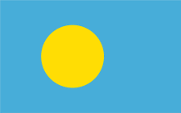 |
Nationalflagge – national flag, Seitenverhältnis – ratio = 5:8, Quelle/Source, nach/by: Flags of the World   |
|
|
|
historische Flaggen – historical Flags: |
|
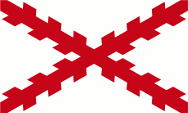 |
16./18. Jhd./cent., Die Inseln gehören zum spanischen Machtbereich – The islands belong to the Spanish sphere of influence, Quelle/Source, nach/by: Wikipedia (EN) |
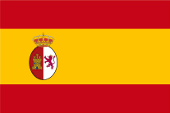 |
1785–1899, Flagge Spaniens – flag of Spain, Quelle/Source, nach/by: World Statesmen |
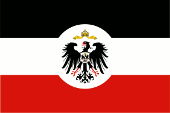 |
1899–1914, Deutsches Reich – German Empire, Dienstflagge Kolonialamt – official flag of Colonial Office, Seitenverhältnis – ratio = 2:3, Quelle/Source, nach/by: Wikipedia (DE)    |
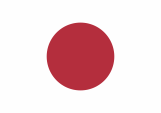 |
1914–1944, Flagge Japans – flag of Japan, Seitenverhältnis – ratio = 7:10, Quelle/Source, nach/by: Wikipedia (EN) |
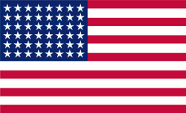 |
1944–1959, Flagge der USA – flag of USA, Seitenverhältnis – ratio = 10:19, Quelle/Source, nach/by: Wikipedia (DE)
|
 |
1960–1994, Flagge der USA – flag of USA, Seitenverhältnis – ratio = 10:19, Quelle/Source, nach/by: Wikipedia (DE) |
 |
1947–1962,   |
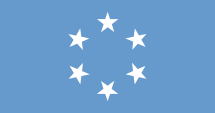 |
1962–1980, UN-Teuhandgebiet – UN Trust Territory, Flagge der Pazifischen Inseln – flag of the Pacific Islands, Seitenverhältnis – ratio = 10:19, Quelle/Source, nach/by: Flags of the World |
|
|
|
| Die heutige Flagge der Palau-Inseln wurde 1979 von Blau Skebong geschaffen und am 13.06.1980 offiziell eingeführt. Sie zeigt eine gelbe, zum Mast hin verschobene Scheibe auf einem hellblauen Grundtuch. Das Blau symbolisiert den Ozean und Kontinuität. Die Scheibe ist ein Sinnbild des Mondes und steht für den vegetativen Zyklus und den rituellen Mondzyklus und für den Aufstieg Palaus zu einer unabhängigen Nation. Das Blau ist im Vergleich zur vorher verwendeten Flagge der "Pazifischen Inseln" bewusst anders gewählt worden, um den Wechsel von halbkolonialer Abhängigkeit zur staatlicher Souveränität zu symbolisieren. Die Farben der Flagge sind per Gesetz Nr. 7-6-2 (Bill 7-230, D7) ab dem 22. Oktober 1980 festgelegt, allerdings nur als als "goldgelb" und "himmelblau", die heute folgendermaßen definiert zu sein scheinen: Blau = HEX #4AADD6, was Pantone 298 entsprechen würde, Gelb = HEX #FFDE00, was Pantone Hexachrome Yellow entsprechen würde. |
The current flag of the
Palau Islands was created by Blau Skebong in 1979 and officially adopted on
13th of June in 1980. It shows a yellow disc shifted towards the mast on a
light blue ground cloth. The blue symbolises the ocean and continuity. The disc is a symbol of the moon and represents the vegetative cycle and the ritual lunar cycle and the rise of Palau as an independent nation. The blue has been deliberately chosen differently from the previously used flag of the "Pacific Islands" to symbolise the change from semi-colonial dependence to state sovereignty. The colours of the flag are defined by Law 7-6-2 (Bill 7-230, D7) as of 22 October 1980, but only as "golden yellow" and "sky blue", which today appear to be defined as follows: Blue = HEX #4AADD6, which would correspond to Pantone 298, Yellow = HEX #FFDE00, which would correspond to Pantone Hexachrome Yellow. |
| Als die Palau-Inseln noch Teil des UNO-Treuhandgebietes "Pazifische Inseln" waren, also zwischen 1947 und 1979, wurde hier seit dem 03.10.1962 bis zum Ausscheiden der Marshall-Inseln aus dem Verband der Pazifischen Inseln (1979) die Flagge des UNO-Treuhandgebietes gehisst. Sie war hellblau und zeigte sechs kreisförmig angeordnete weiße fünfzackige Sterne. Das Blau stand für die UNO und die sechs Sterne für die sechs Verwaltungsbezirke, aus denen die Pazifischen Inseln bestanden. | When the
Palau Islands still have been a part of the UN Trust Territory of the
"Pacific Islands", so between 1947 and 1979, was hoisted here since 3rd of
October in 1962 and the retire of the Marshall Islands from the society of
the Pacific Islands the the flag of the UN Trust Territory. It was pale blue and showed six circular grouped white five-pointed stars. The blue stood for the UN and the six stars for the six administrative districts, the Pacific Islands consisted of. |
| Quelle/Source: Flags of the World, Flaggen und Wappen der Welt, Wikipedia (EN) | |
Wappen – Coat of Arms: |
|||
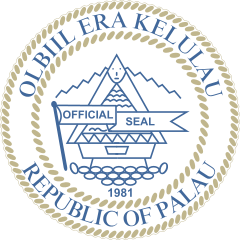 |
Siegel der Palau-Inseln – Seal of Palau Islands, Quelle/Source: Washiucho, Public domain, via Wikimedia Commons
|
| |
| Die Palau-Inseln verwenden ein Siegel. Es wurde 1955 eingeführt. Es zeigt in der Mitte ein sogenanntes Versammlungshaus. Darüber ein Schriftband mit der Beschriftung "Official Seal" → "Amtliches Siegel". Das Versammlungshaus steht auf achtzehn Steinen, welche die Teilrepubliken des Landes symbolisieren. Anlässlich der Proklamation der Republik wurde im Jahre 1981 noch die Jahreszahl ergänzt. Ringsherum die Worte "Olbil era Kelulalu" (der einheimische Name des Parlaments des Landes) und der Name des Landes in englischer Sprache: "Rebuplic of Palau" → "Republik Palau". | The Palau
Islands use a seal. It was introduced in 1955. It shows in the middle a so
named meeting-house. Above that a banner with the inscription "Official
Seal". The meeting-house stands on eighteen stones which symbolize the single republics of the country. On the occasion of the proclamation of the republic was added in 1981 even the number of the year ergänzt. All around in a circle the words "Olbil era Kelulalu" (the native name of the country's parliament) and the name of the country in English language: "Rebuplic of Palau". |
| Quelle/Source: Flaggen und Wappen der Welt | |
Landkarte – Map: |
Lage – Position: |
Landkarte des Landes – Map of the Country: |
|
|
| Zahlen und Fakten – Numbers and Facts: | |
|
|
|
|
|
|
|
|
|
|
|
|
|
|
|
|
|
|
|
ca. 1500 v.Chr. · erste Besiedlung der Inseln 1543 · Entdeckung der Palau-Inseln durch den spanischen Seefahrer Ruy López de Villalobos 18. Jhd. · spanische Kolonisierung 1899 · Spanien verkauft die Karolinen (und damit Palau) an das Deutsche Reich, Anschluss an die Kolonie Deutsch-Neuguinea 1914 · Erster Weltkrieg (1914–1918), Besetzung durch japanische Truppen 1920 · Versailler Diktat, das Deutsche Reich verliert alle seine Kolonien, die Palau-Inseln und die anderen Karolinen-Inseln werden – zusammen mit den anderen deutschen Besitzungen (Marshall-Inseln und Marianen-Inseln) in Mikronesien – offiziell als "Pazifische Inseln" ein Mandatsgebiet des Völkerbundes an Japan übergeben 1944 · Zweiter Weltkrieg (1939–1945), Besetzung durch US-amerikanische Truppen 1947 · die Karolinen (und damit Palau) werden offiziell an die USA übergeben, Bildung des UNO-Treuhandgebiets der "Pazifischen Inseln" (Marianen, Marshall-Inseln, Karolinen) unter US-amerikanischer Verwaltung 1965 · Einrichtung einer eigenen gesetzgebenden Versammlung für die Pazifischen Inseln 1978 · Referendum für die Bildung der Föderierten Staaten von Mikronesien nach dem Ende der US-Verwaltung auf den Pazifischen Inseln, die Marianen-Inseln verlassen den Verband der Pazifischen Inseln und werden ein mit den USA assoziierter Staat 1979 · Palau erhält seine erste eigene Verfassung, die Marshall-Inseln verlassen den Verband der Pazifischen Inseln und werden 1986 ein mit den USA assoziierter Staat, Wahlen auf den Karolinen zum Parlament der Föderierten Staaten von Mikronesien, neue Verfassung für Mikronesien 1981 · die Palau-Inseln verlassen die Föderierten Staaten von Mikronesien, proklamieren sich zur Republik und erhalten teilweise Selbstverwaltung 1990 · offizielle Aufhebung des UNO-Treuhandgebiets 01.10.1994 · die Palau-Inseln werden formell unabhängig (Aufnahme in die UNO) und werden ein mit den USA assoziierter Staat |
|
ca. 1500 B.C. · first settlement on the islands 1543 · discovery of the Palau Islands by the Spanish seafarer Ruy López de Villalobos 18th cent. · Spanish colonization 1899 · Spain sells the Caroline Islands to the German Empire, annexation to the colony of German New Guinea 1914 · First World War (1914–1918), occupation by Japanese troops 1920 · Versailles Dictate, the German Empire loses all its colonies, the Palau Islands and the other Caroline Islands become officially – together with the other German possessions (Mariana and Marshall Islands) in Micronesia – as "Pacific Islands" a Mandate Territory of the League of Nations handed over to Japan 1944 · Second World War (1939–1945), occupation by US-American troops 1947 · the Caroline Islands (and in this way Palau) become officially hand over to the USA formation of the UN trust territory of the "Pacific Islands" (Mariana Islands, Marshall Islands, Caroline Islands) under US-American administration 1965 · establishment of an own legislative congregation for the Pacific Islands 1978 · referendum for the formation of the Federated State of Micronesia after the end of the USA administration on the Pacific Islands, the Mariana Islands leave the society of the Pacific Islands and become a with the USA associated state 1979 · Palau gets its first own constitution, the Marshall Islands leave the society of the Pacific Islands and become in 1986 a with the USA associated state, elections on the Caroline Islands to the parliament of the Federated State of Micronesia, new constitution for Micronesia 1981 · the Palau Islands leave the Federated State of Micronesia, proclaim itself to republic and get partial autonomy 1990 · official abolition of the UN trust territory 1993 · the Palau Islands become a with the USA associated state 1st of October 1994 · the Palau Islands become formally independent (joining to UNO) and become a with the USA associated state |
| Quelle/Source: Wikipedia (EN) |
| Der Ursprung des Landesnamens "Palau" liegt weitgehend im Dunklen. Angeblich soll es sich um eine Verfälschung des Namens der Hauptinsel "Panloq" handeln. |
The origin of the
country's name "Palau" is largely obscure. It is said to be a falsification of
the name of the main island "Panloq". |
| Quelle/Source: Wiktionary (DE) | |